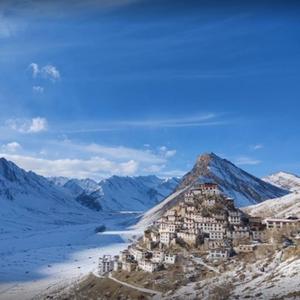The glaciers of the Himalayas are melting rapidly
In recent decades, the Himalayan glaciers have been melting quickly due to climate change. Many glaciers are thinning by 0.3 to 1 meter per year, which is faster than the global average. A 1.5°C rise in global temperature results in a warming of 2.1 ± 0.1°C in the region of the Himalayan glaciers. It is estimated that only 64 ± 7% of the current ice mass will remain by the end of the century in the Asian high mountain glaciers.
A study examined the effects of the melting of Himalayan glaciers on our planet using complex adaptive systems (CAS) and systems theory models. The researchers conducted a literature review and organized peer-reviewed and gray literature using relevant filter keywords and inclusion and acceptance criteria.
Through this research methodology, the following key findings were made regarding the melting of the Himalayan glaciers:
- Ecosystem Services: The melting of glaciers harms the Himalayan ecosystem, biodiversity, and ecological services.
- Disasters: There is an increasing risk of glacier lake outbursts, landslides, and floods.
- Water Security: The melting of glaciers reduces the water supply of rivers, leading to water scarcity.
- Food Security: Water scarcity and the risk of disasters threaten food production and food security.
- Energy Security: The operation of hydropower plants is jeopardized by the decreasing water supply.
- Livelihoods and Culture: The melting of glaciers negatively impacts livelihoods and local cultures.
- Migration: Water scarcity and disasters lead to migration.
- Social Conflicts: Competition for water resources can lead to conflicts.
- Public Health: Water scarcity, disasters, and the spread of diseases threaten public health.
Based on their findings, it can be stated that the melting of the Himalayan glaciers poses serious dangers. Experts emphasize the need for further research, particularly on the public health impacts of glacier melting, and the importance of cooperation among the countries of the Himalayas.
